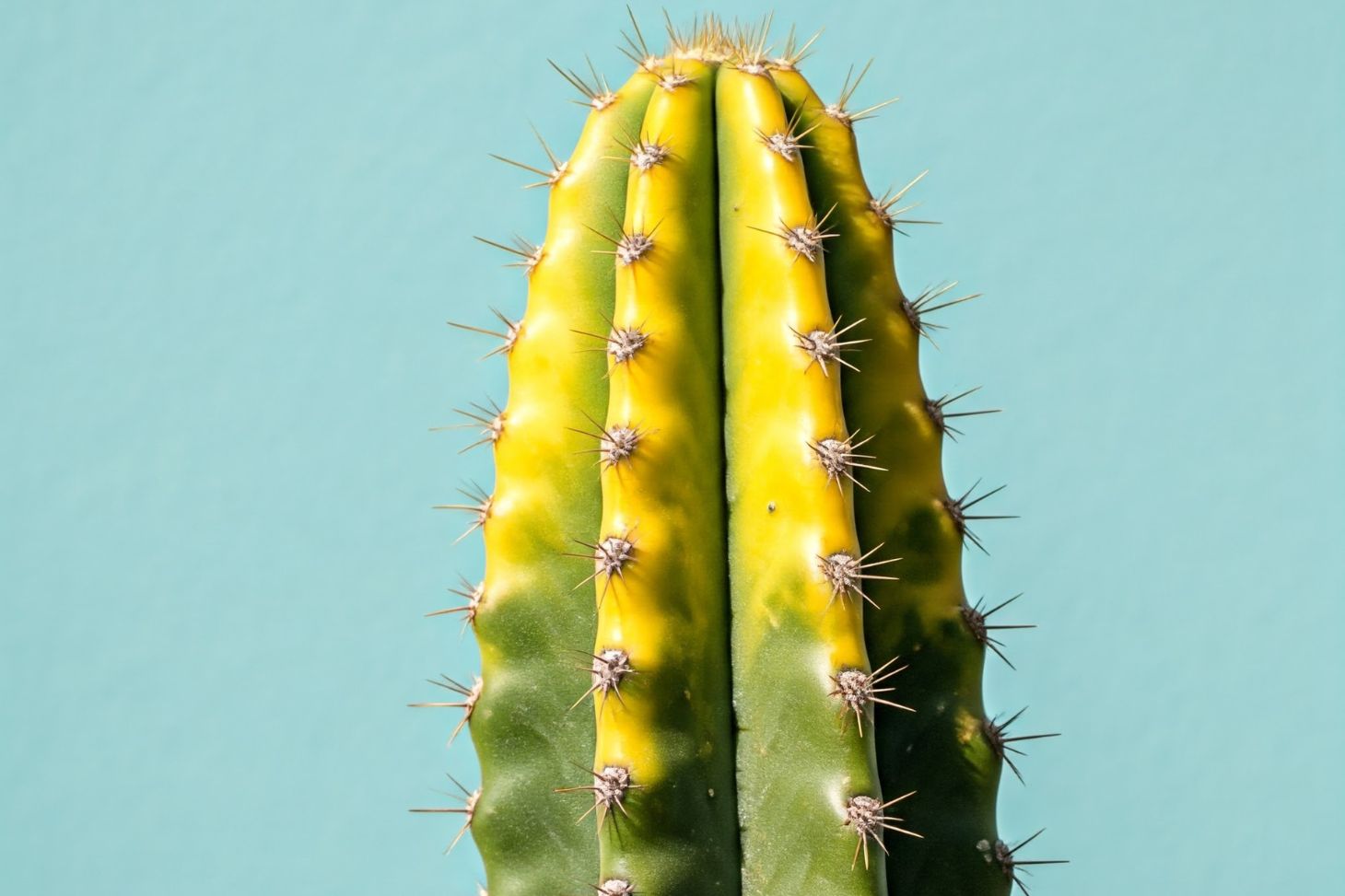Why Is My Cactus Turning Yellow?
Cacti are known for their resilience and low maintenance requirements, making them a popular choice for both indoor and outdoor plant enthusiasts. However, even the most experienced gardeners may encounter issues with their cacti, such as yellowing of the plant. While this may be concerning, it is not necessarily a sign of imminent plant death. Understanding the potential causes of cactus yellowing can help diagnose and treat the issue promptly.
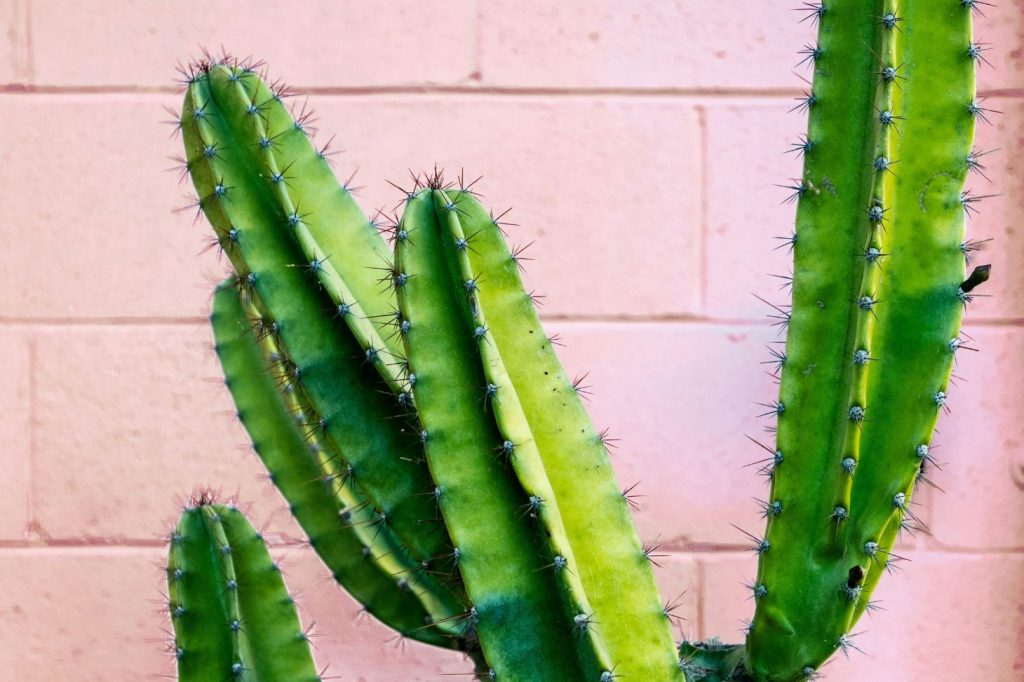
One common cause of cactus yellowing is environmental factors. Most cacti are adapted to thrive in arid conditions, and overwatering or exposure to excessive humidity can lead to yellowing of the plant. Additionally, cacti require ample sunlight, and lack of exposure to sunlight can also cause yellowing. However, environmental factors are not the only potential cause of cactus yellowing, and it is important to consider other possibilities, such as diseases affecting the plant.
Overall, identifying the cause of cactus yellowing is crucial in determining the appropriate course of action to restore the plant’s health. By understanding the common causes and potential solutions, gardeners can take proactive steps to ensure their cacti remain healthy and vibrant.
Common Causes of Cactus Yellowing
Cacti are known for their resilience and low maintenance, but they are not immune to yellowing. The yellowing of a cactus can be a sign of various issues, including insufficient watering, excessive watering, nutrient deficiency, or pest infestation. In this section, we will discuss these common causes of cactus yellowing.
Insufficient Watering
Underwatering is one of the most common causes of yellowing in cacti. When a cactus does not receive enough water, it starts to lose its green color and turn yellow. This is because the chlorophyll, which is responsible for the green color of the cactus, starts to break down. In severe cases, the cactus may start to wilt and eventually die.
Excessive Watering
Overwatering is another common cause of yellowing in cacti. When a cactus receives too much water, the roots start to rot, and the plant cannot absorb nutrients properly. This can lead to yellowing and even root rot. It is essential to water cacti sparingly and ensure that the soil is well-draining.
Nutrient Deficiency
Cacti require specific nutrients to grow and thrive. A lack of essential nutrients, such as nitrogen, phosphorus, and potassium, can cause yellowing in cacti. Nutrient deficiency can occur due to poor soil quality or lack of fertilization. It is essential to provide cacti with the right balance of nutrients to prevent yellowing.
Pest Infestation
Pests such as mealybugs, spider mites, and scale insects can infest cacti and cause yellowing. These pests feed on the sap of the cactus, which can lead to yellowing and even death. It is essential to inspect cacti regularly for signs of pest infestation and treat them promptly.
Environmental Factors
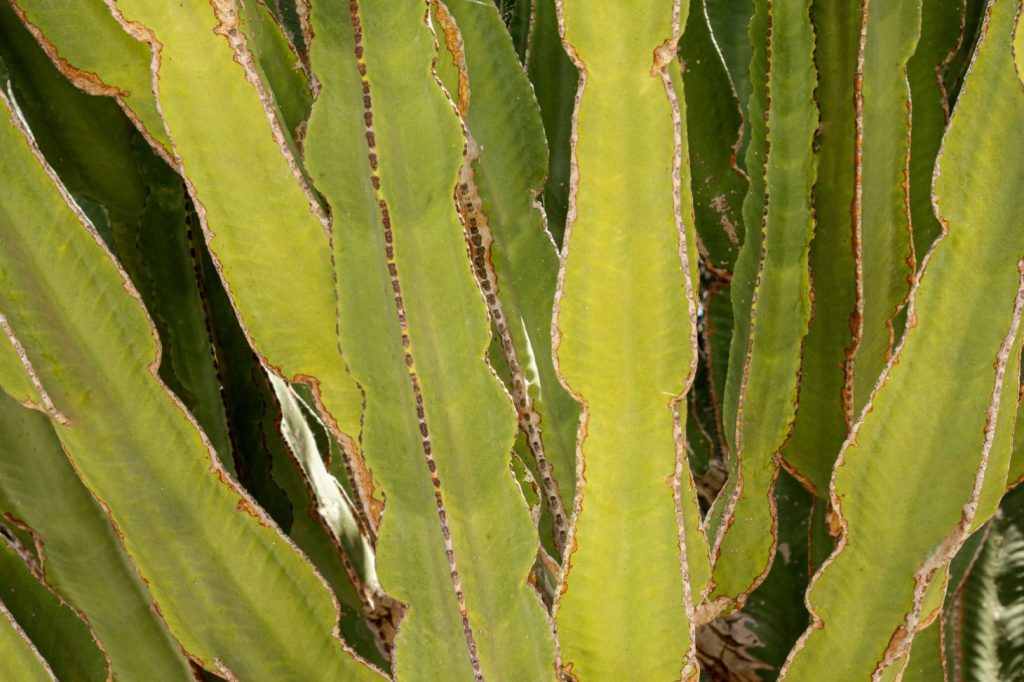
Sunlight Exposure
One of the most common reasons for a cactus turning yellow is excessive exposure to direct sunlight. While cacti are known for their ability to thrive in arid environments, many species in the wild thrive in the shade during the hottest parts of the day to prevent overheating. However, the specific need for shade varies greatly depending on the cactus species. Some are adapted to full sun, while others prefer more filtered light. If a cactus is placed in a location that receives too much direct sunlight, it can suffer from sunburn, which can cause the plant to turn yellow.
To prevent this, it is important to place the cactus in a location that receives partial shade during the hottest parts of the day. If the cactus is already turning yellow due to sunburn, it may be necessary to move it to a shadier location until it recovers.
Temperature Stress
Cacti are also sensitive to extreme temperatures. If the temperature drops too low or rises too high, the plant may begin to turn yellow. In some cases, the cactus may even die if the temperature stress is severe enough.
To prevent temperature stress, it is important to keep the cactus in a location where the temperature remains relatively stable. This may require moving the plant indoors during the winter months or providing shade during the hottest parts of the day.
Humidity Conditions
Most cacti are adapted to survive in dry environments, so they can be sensitive to high humidity levels. If the air around the cactus is too humid, it may begin to turn yellow and develop other signs of stress.
To prevent this, it is important to provide good air circulation around the cactus. This can be achieved by placing a fan near the plant or by moving it to a location with better air flow. Additionally, it may be necessary to reduce the frequency of watering to prevent excess moisture from accumulating around the roots.
Diseases Affecting Cacti
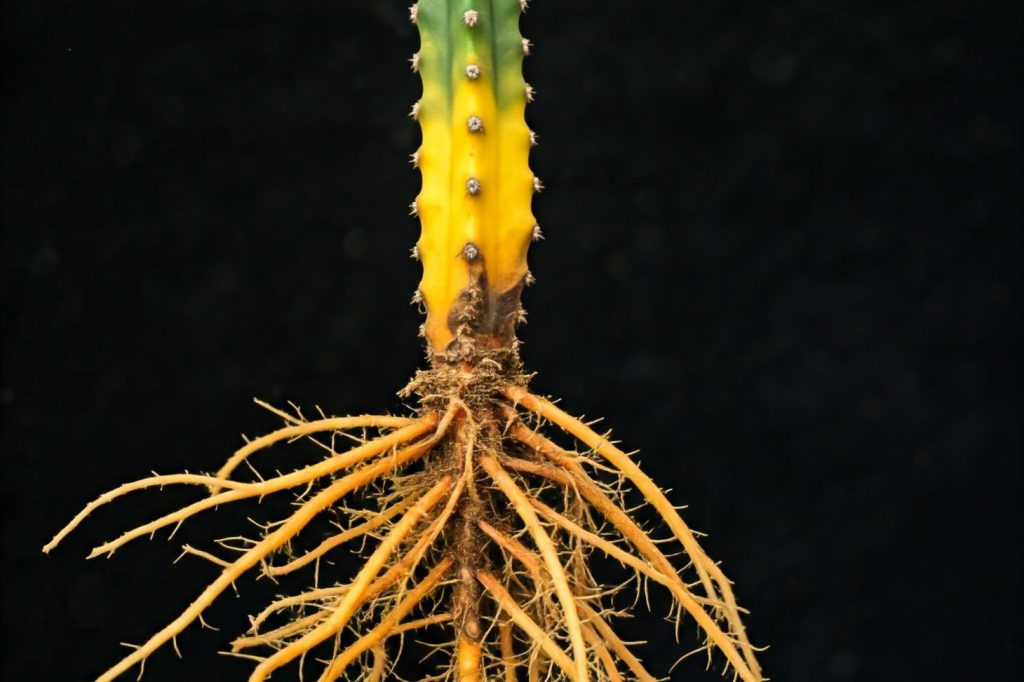
Cacti are known for their hardiness and ability to thrive in harsh conditions. However, they are not immune to diseases. In this section, we will discuss two common diseases that affect cacti: root rot and fungal infections.
Root Rot
Root rot is a fungal disease that affects the roots of cacti. It is caused by overwatering or poor drainage, which leads to the roots becoming waterlogged and unable to absorb oxygen. Symptoms of root rot include yellowing and wilting of the cactus, as well as soft and mushy roots.
To prevent root rot, it is important to ensure that your cactus is planted in well-draining soil and that you do not overwater it. If you suspect your cactus has root rot, you should remove it from the soil and cut away any affected roots. You can then replant the cactus in fresh, well-draining soil.
Fungal Infections
Fungal infections can affect various parts of the cactus, including the stem, leaves, and flowers. Symptoms of fungal infections include yellowing, wilting, and spotting of the affected area.
To prevent fungal infections, it is important to keep your cactus clean and dry. Avoid letting water sit on your cactus’ surfaces, as this can create a moist environment that is conducive to fungal growth. If you suspect your cactus has a fungal infection, you should remove the affected area if possible and treat it with a fungicide.
Cactus Care Tips
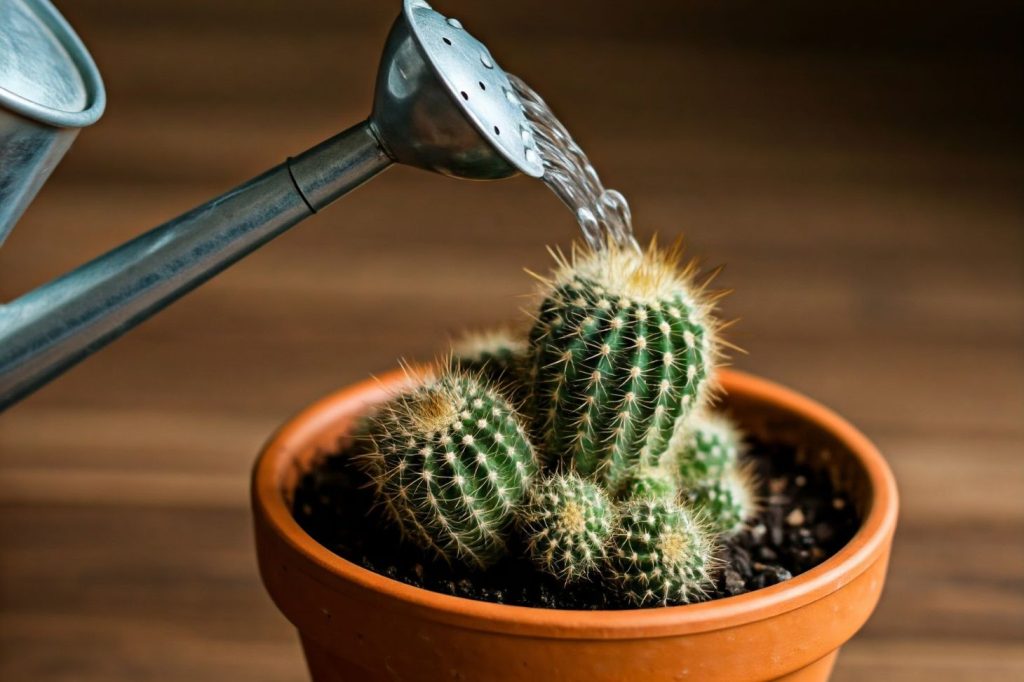
Proper Watering Techniques
Cacti are desert dwellers and require infrequent watering. Overwatering is a common cause of yellowing. During the growing season (spring/summer), water thoroughly every 10 days, ensuring complete drainage. The soil should be dry between waterings. In winter, reduce watering to once every 4-6 weeks, keeping the soil mostly dry. Overwatering leads to root rot, causing yellowing and potentially killing the cactus.
Fertilization Practices
Cacti do not require frequent fertilization, but they do benefit from occasional feeding. During the growing season, which is typically in the spring and summer, a balanced cactus fertilizer can be applied once every four to six weeks. It is important to follow the instructions on the fertilizer packaging and not to over-fertilize, as this can cause damage to the plant.
Pest Prevention
Pests, such as mealybugs, scale insects, spider mites, and fungus gnats, can cause cacti to turn yellow. Symptoms include shriveled leaves, a mold-like coating, and the appearance of bugs. Regularly inspect your cactus for pests. If found, gently wash them off with a hose or cotton swabs. Avoid harsh chemicals. Natural remedies like neem oil or insecticidal soap can be effective when used as directed. Overwatering can lead to fungal or bacterial rot, causing dark spots and oozing. Remove affected areas and treat with diluted hydrogen peroxide.
Troubleshooting Yellowing Issues
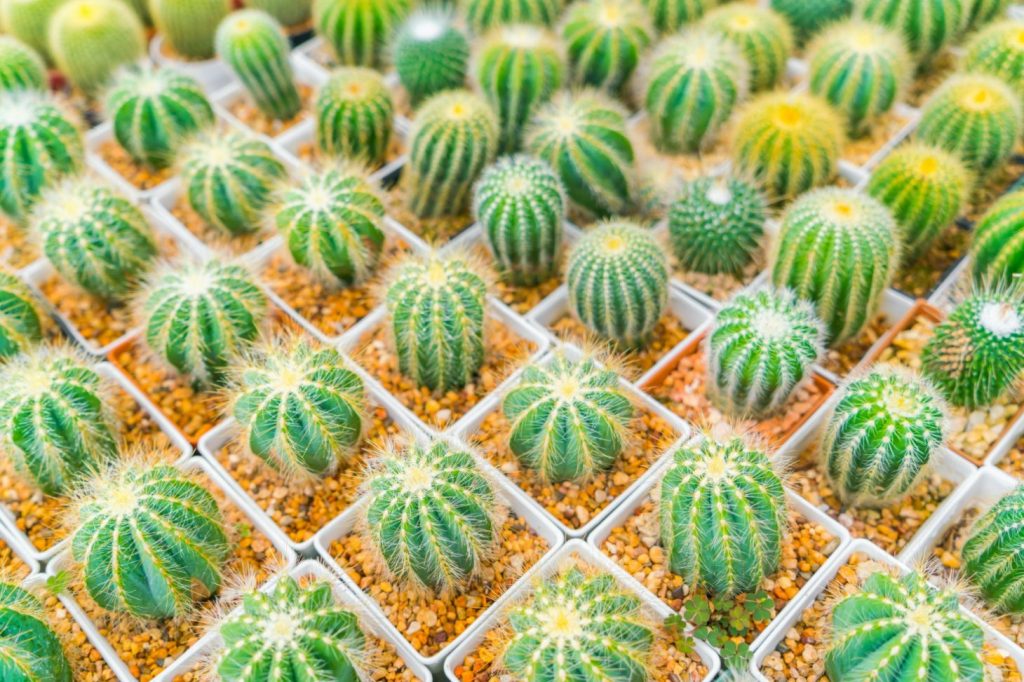
When a cactus starts to turn yellow, it can be a sign of various issues. Here are some common causes of yellowing and how to troubleshoot them.
Overwatering
Overwatering is one of the most common reasons why cacti turn yellow. When the soil is constantly wet, the roots can rot, which prevents the plant from absorbing nutrients properly. As a result, the cactus may turn yellow and wilt.
To fix this issue, reduce watering frequency and make sure the soil is well-draining. If the soil is too compacted, add some sand or perlite to improve drainage.
Underwatering
Underwatering can also cause yellowing in cacti. When the plant doesn’t receive enough water, it can’t photosynthesize properly, which leads to a lack of chlorophyll and yellowing.
To fix this issue, water the cactus deeply and regularly. However, make sure the soil is well-draining and doesn’t stay wet for too long.
Lack of Sunlight
Cacti need plenty of sunlight to thrive, and a lack of it can cause yellowing. When the plant doesn’t receive enough light, it can’t produce enough chlorophyll, which leads to yellowing.
To fix this issue, move the cactus to a sunnier spot. However, make sure to acclimate the plant gradually to prevent sunburn.
Nutrient Deficiency
A nutrient deficiency can also cause yellowing in cacti. When the plant doesn’t receive enough nutrients, it can’t produce enough chlorophyll, which leads to yellowing.
To fix this issue, fertilize the cactus with a balanced fertilizer that contains nitrogen, phosphorus, and potassium. However, make sure not to over-fertilize, as this can also cause yellowing.

